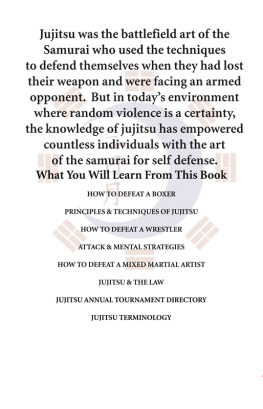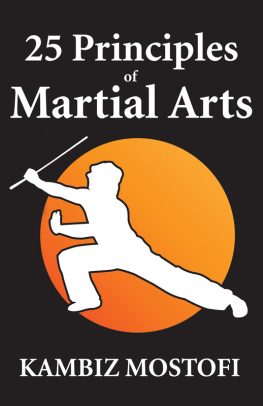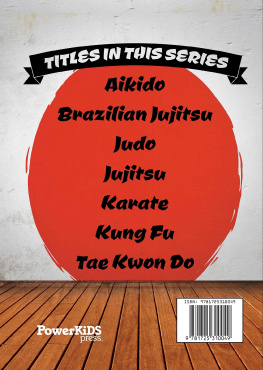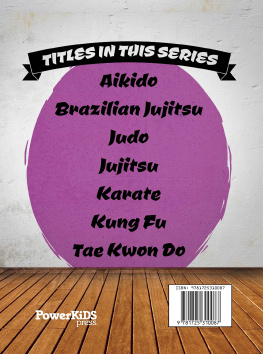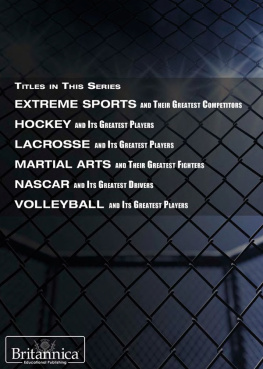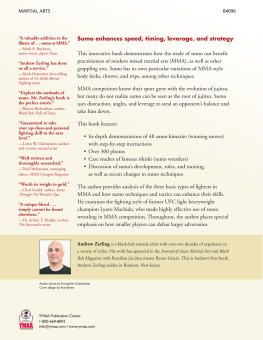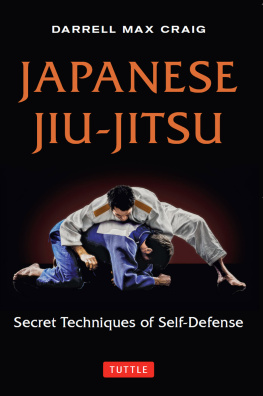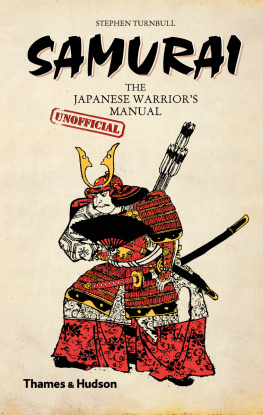As a individual that has trained in martial arts for the majority of my life, I felt that a manual that best explained the style that I teach and practice would be available to myself, my students, and to other students of the martial arts as a reference. This book will teach you the principles and give you more knowledge about modern jujitsu as its practiced by Jujitsu students. It will not make you a black belt, give you higher ranking, or make you a jujitsu master. Reading a book to become a jujitsu master is like reading a driving manual and instantly becoming a driver or reading a medical textbook and then doing heart surgery. You can, however, read a medical textbook and perform heart surgery, but please, first wish your patient and yourself good luck! Please have fun reading my work & enjoy!
What is Jujitsu?
Jujitsu is a martial art that was used by Samurai during their most erratic period of internal political strife, the 15th to 16th century AD. Modern jujitsu is referred to as Gendai jujutsu or modern self defense jujitsu because the style was formed after 1900. Modern jujitsu styles are also known as Goshin Jujitsu. Jujitsu adapted low kicking techniques from karate, throws from judo, and pugilistic techniques used in boxing. Jujitsu applies traditional Japanese philosophies and mannerisms such as bowing. Its training techniques are modern. Jujitsu practitioners train using athletic shoes with their jujutsu gi. Free fighting is done on hardwood floors but throwing and ground grappling is conducted on inch to 1 inch thick interlocking mats designed for preventing injuries from falls.
Modern jujitsu stresses the simplification of the application of techniques, streamlining of the training and methods and adaptation of effective techniques from other combative systems. The basis of the Jujitsu defensive posture is its many guards, used for the purpose of achieving complete protection against hooks and kicks. Offensively, modern jujitsu practitioners use strike or submission attempts in combinations. Circular body movements are used when off balancing, throwing, joint locking and evading. Jujitsu literally means yielding techniques.
Jujitsu uses the principle of yielding as the basis for its fighting style. The style emphasizes blending your energy with that of the opponent in order to stop their attack. An example of this would be you entering to clinch your opponent as they strike and off balancing them.
Modern jujitsu uses punching, kicking, blocking, evasions, seizing, clinching, locking, throwing, tripping, sweeping, defensive escapes , ground fighting , Kata(forms) and Ki development. The system depends on the use of effective techniques, rather than serving other purposes. The rotation of the Jujitsu practicioner is philosophical as well as functional. The rotation and the force that is generated by the rotation, entangles the opponent in the movement and force of your bodys rotation. This has the result of making you a moving target which creates visual targeting difficulties for your opponent as he/she attempts a technique. The maneuvering creates effective evasions and makes it much easier for the jujitsu practicioner to avoid attacks. The rotation evades these attacks by maneuvering. Modern jujitsu is a goju style or hard/soft style. Go means hard in Japanese and Ju meaning soft or yielding. The hardness of the Jujitsu style is associated with striking techniques using punches, kicks, and knees. The softness of the style is associated with off balancing, throwing, joint locking, choking or strangling, escapes, evasions, and use of meditation.
The phrase Ju Yoku Sei Go translates as Softness Controls Hardness. Softness controls hardness because the most resilient things in nature are those that are supple, flexible, adaptable, and able to blend with their environment. Modern Jujitsus techniques use hard techniques as well but the correct and effective application of techniques is the defining factor. The chances are real that there are people who may be taller than you, stronger than you, faster than you, more intelligent than you, harder punching or kicking than you, or a better grappler. This is precisely the reason the Jujitsu practicioner relies on the principles that guide the style. The use of strikes, off balancing, throws, and submissions in combination is the first principle. The second principle is constant circling which means to not stop maneuvering and moving against your opponent. The loss of maneuvering creates a stationary target that makes it easy for your opponent to be able to attack you. The third principle is the effective use of counter-striking which means that you should actively seek openings or gaps in the defenses of the opponent. If the opponent steps into your kicking range and their left leg was the first part of their body to enter your kicking range, it would be a wasted opportunity for you to not attempt a low roundhouse kick. When your opponent attacks, vulnerabilities are created in their defenses because no individual is able to attack and defend all areas of their body simultaneously. 99.9 percent of martial artists are unable to attack and defend simultaneously. Jujitsu students learn to attack and defend without revealing major gaps by utilizing the modern boxing guard.
Yieldings strength can be attested to by the geography of the earth which has been shaped by the vast oceans which inhabit our planet. Water is supple, soft, and flexible. It takes the shape and form of the item it is contained by, thus it is adaptable. The Jujitsu practicioner must also be adaptable to the opponent, adaptable to harsh training conditions, as well as being adaptable to lifes series of positive and negative events.

